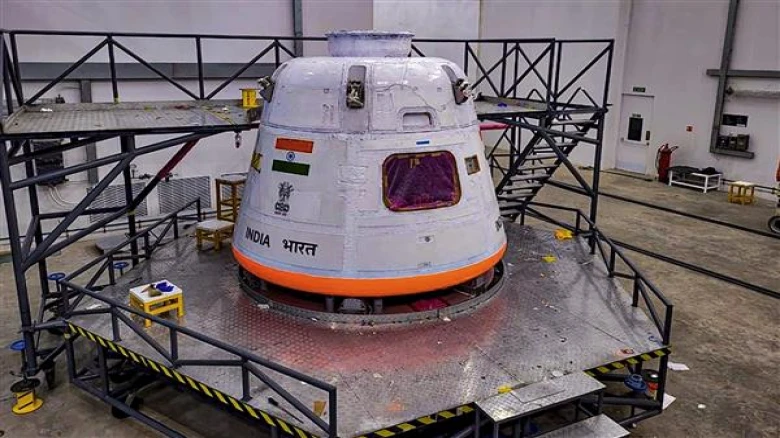Regional

The Indian Space Research Organisation (ISRO) has announced its plans to initiate crucial unmanned flight tests for the ambitious...
Digital Desk: The Indian Space Research Organisation (ISRO) has announced its plans to initiate crucial unmanned flight tests for the ambitious Gaganyaan human spaceflight mission, marking a significant milestone in India's space exploration endeavors. The space agency revealed on Monday that it will conduct the first test vehicle flight, known as TV-D1, between 7 a.m. and 9 a.m. on October 21, 2023, from the Satish Dhawan Space Centre (SDSC-SHAR) in Sriharikota.
In a statement posted on the social media platform X, ISRO confirmed the test flight's schedule and stated, "Mission Gaganyaan: The TV-D1 test flight is scheduled for October 21, 2023, between 7 a.m. and 9 a.m. from SDSC-SHAR, Sriharikota.”
The Gaganyaan project aims to demonstrate India's human spaceflight capabilities by sending a crew of Indian astronauts into orbit at an altitude of 400 km and then safely returning them to Earth by landing in the Indian Sea. The TV-D1 test flight is a critical step in this mission and focuses on testing the crew module (CM) that will house Indian astronauts during the upcoming human spaceflight mission, set to occur late next year.
During the TV-D1 test flight, an unmanned crew module will be launched into outer space, retrieved after reentry, and safely recovered in the Bay of Bengal. ISRO Chairman S Somanath announced that following the TV-D1 test flight on October 21, three additional test missions, labeled D2, D3, and D4, will be carried out as part of the Gaganyaan program.
The TV-D1 test vehicle is equipped with a single-stage liquid rocket specifically designed for abort missions. It carries a payload that includes the Crew Module (CM) and Crew Escape System (CES) with fast-acting solid motors, as well as the CM fairing (CMF) and Interface Adapters.
At an altitude of approximately 17 km, the Crew Escape System with the Crew Module will separate from the test vehicle. An autonomous abort sequence will then be initiated, involving the separation of the CES and the deployment of a series of parachutes, ultimately leading to the safe landing of the CM in the sea, approximately 10 km from the Sriharikota coastline, as stated by ISRO.
The crew module is a pivotal element where astronauts will be housed in a pressurized, Earth-like atmosphere during the Gaganyaan mission. The CM for the Gaganyaan mission is currently in various stages of development. For the TV-D1 test flight, the CM is an unpressurized version that has undergone integration and testing.
ISRO further added, "With its complete set of parachutes, recovery aid actuation systems, and pyros, the avionics systems in CM are in a dual redundant mode configuration for navigation, sequencing, telemetry, instrumentation, and power. The CM in this mission is extensively instrumented to capture the flight data for evaluation of the performance of various systems."
The retrieval of the crew module after landing in the Bay of Bengal will be conducted by a dedicated vessel and a diving team from the Indian Navy.
ISRO's successful execution of these test flights will play a pivotal role in ensuring the safety and reliability of the upcoming Gaganyaan mission, marking a significant milestone for India's space exploration program and bringing the nation closer to achieving its human spaceflight goals.
Leave A Comment